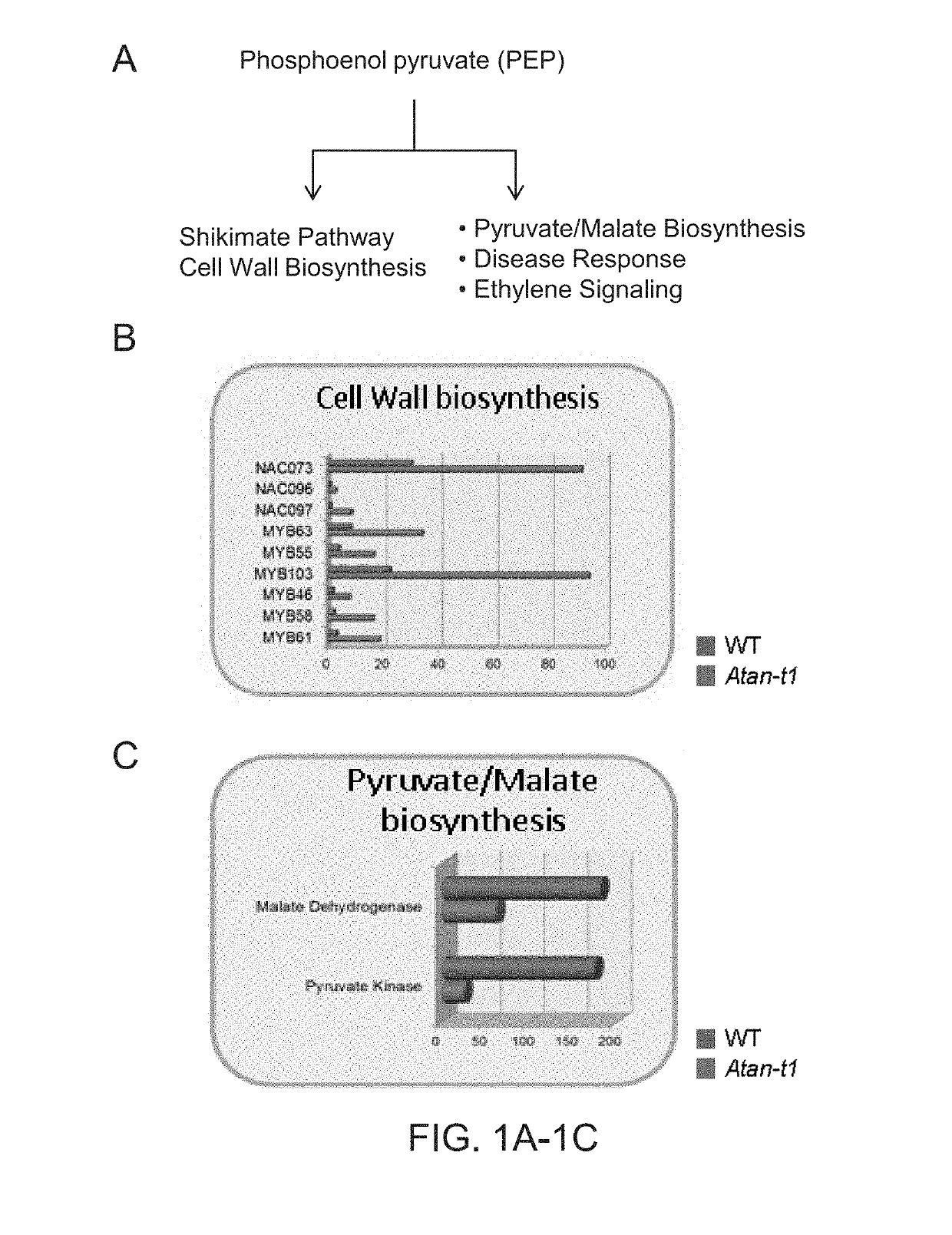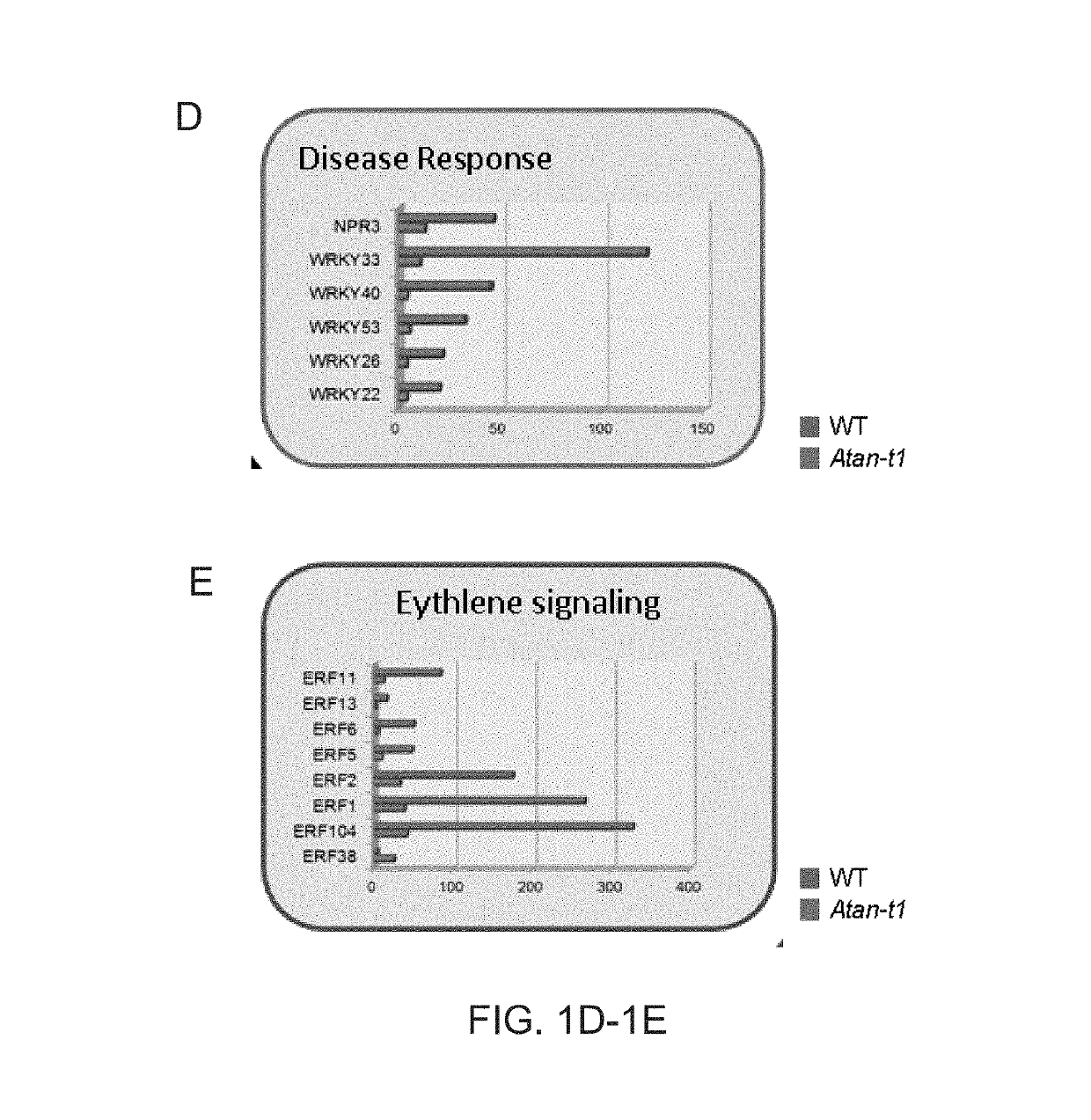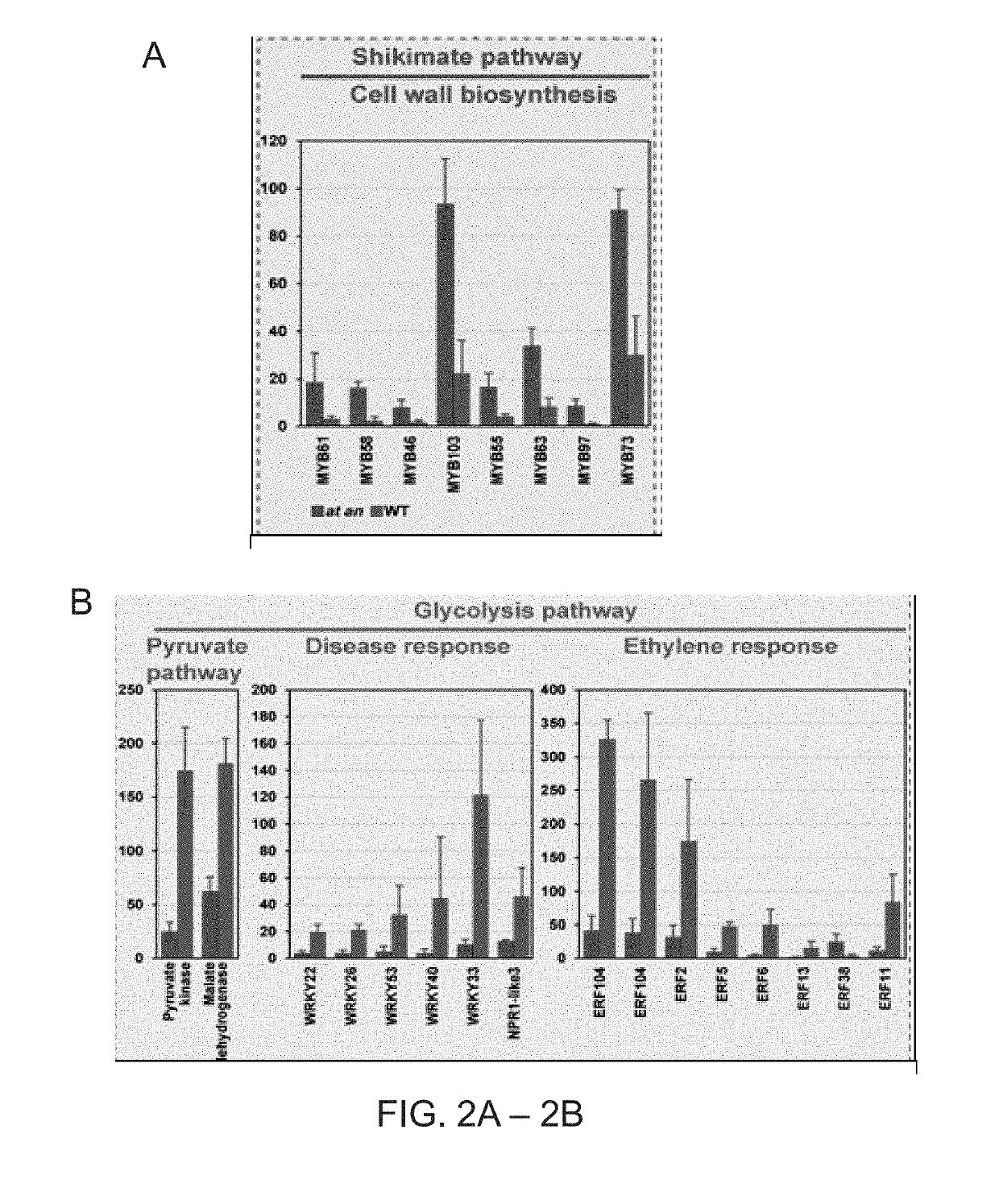Methods of controlling vegetative growth and flowering times by modulating phosphoenolpyruvate shunt between shikimate and glycolysis pathways
a technology of phosphoenolpyruvate and glycolysis pathway, which is applied in the direction of recombinant dna-technology, biochemistry apparatus and processes, genetic engineering, etc., can solve the problems of major yield loss and growth inhibition just as detrimental, and achieve the effect of reducing the expression of a gene, and altering the expression of the angustifolia gen
- Summary
- Abstract
- Description
- Claims
- Application Information
AI Technical Summary
Benefits of technology
Problems solved by technology
Method used
Image
Examples
example 1
Materials and Methods
Plant Materials and Growth Conditions
[0109]Arabidopsis plants used in this study were grown in a growth chamber with 12 h light at 23° C. / 12 h dark at 20° C. with 60% relative humidity. The T-DNA insertional mutant an-1 (Gachomo et al., 2013, Bmc Plant Biology, 13, 1) was obtained from the ABRC (Arabidopsis Biological Resource Center, The Ohio State University). For generating an-1 355:AN transgenic plants, full-length of AN was cloned into pENTR vector and then subcloned into binary vector pGWB515 for transformation into an-1 mutant background.
Protoplast Isolation and Transfection
[0110]Arabidopsis mesophyll protoplasts were isolated and transfected as described previously (Yoo et al., Nat Protoc., 2, 1565-1572 (2007)). Protoplasts were isolated from fully expanded leaves from 3-4-week-old Col-0 plants. The concentration of isolated protoplasts was adjusted to 2×105 ml−1. Plasmid constructs were then transfected into protoplasts using PEG-calcium transfection me...
example 2
ANGUSTIFOLIA (AtAN) / CtBP Gene, the Transcriptional Regulator of PEP Shunt Between Shikimate and Pyruvate Biosynthesis
[0120]While characterizing the molecular basis of a significant genome wide association (GWAS) correlation between an ANGUSTIFOLIA / CtBP and cell wall phenotypes in Populus, transcriptional changes in an Arabidopsis T-DNA insertion line with loss of function of the only ANGUSTIFOLIA (AtAN) / CtBP in the genome were characterized.
[0121]The expression of genes encoding Pyruvate kinase and malate dehydrogenase was significantly downregulated in the mutant lines compared to wild type. Since these two genes lie at the entry point of PEP into pyruvate biosynthesis, the responses of genes in the competing Shikimate Pathway were evaluated for evidence of increased PEP shunt in that direction. There was a significant up-regulation of genes associated with shikimate and cell wall biosynthesis in the mutant line. In fact, nine transcription factors with verified regulatory activity...
example 3
AtAN Represses the Shikimate Pathway and Preferentially Shuttles Carbon Towards Pyruvate Biosynthesis
[0122]Differential expression of transcription factors associated with JA and ET signaling were examined. As predicted, five WRKY transcription factors and seven ethylene response factors (ERFs) previously implicated in JA / ET signaling exhibited >2-fold decrease in expression in the mutant line (FIG. 1).
[0123]Additionally, the signal transducer NPR1-like protein was similarly down-regulated. Since AtAN is proposed to function as a transcriptional repressor, these results suggest that in its functional state, AtAN represses the Shikimate pathway and preferentially shuttles carbon towards pyruvate biosynthesis.
PUM
| Property | Measurement | Unit |
|---|---|---|
| time | aaaaa | aaaaa |
| time | aaaaa | aaaaa |
| time | aaaaa | aaaaa |
Abstract
Description
Claims
Application Information
 Login to View More
Login to View More - R&D
- Intellectual Property
- Life Sciences
- Materials
- Tech Scout
- Unparalleled Data Quality
- Higher Quality Content
- 60% Fewer Hallucinations
Browse by: Latest US Patents, China's latest patents, Technical Efficacy Thesaurus, Application Domain, Technology Topic, Popular Technical Reports.
© 2025 PatSnap. All rights reserved.Legal|Privacy policy|Modern Slavery Act Transparency Statement|Sitemap|About US| Contact US: help@patsnap.com



